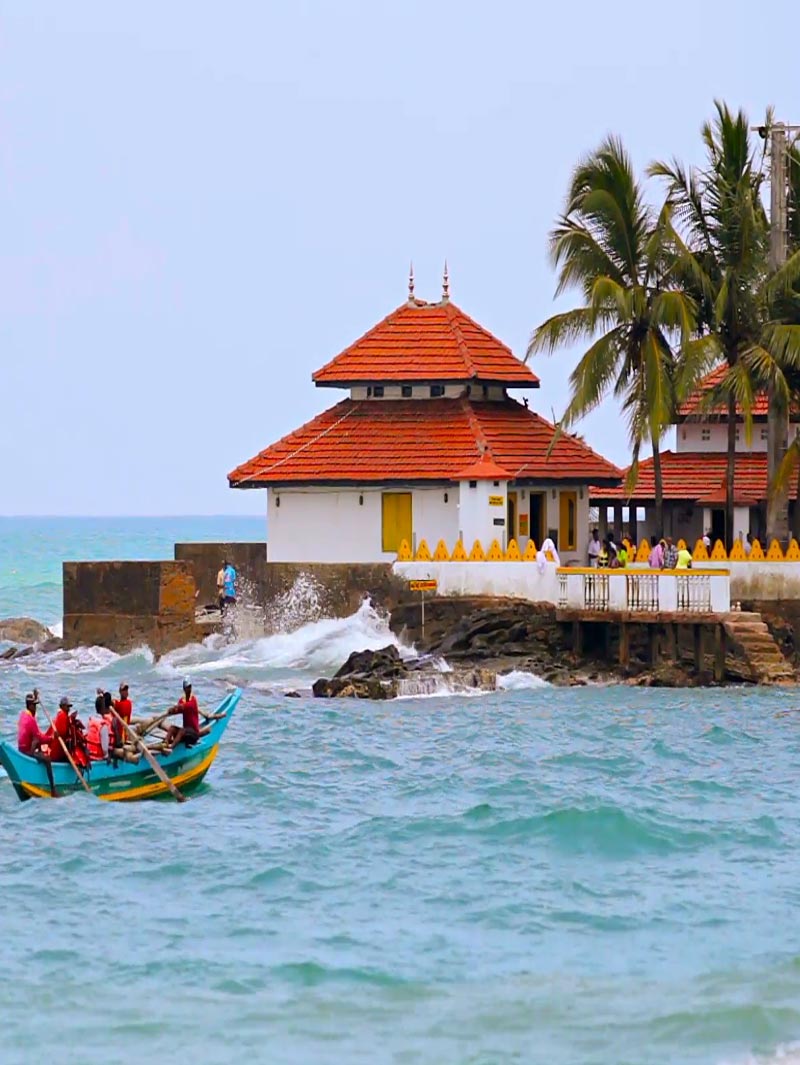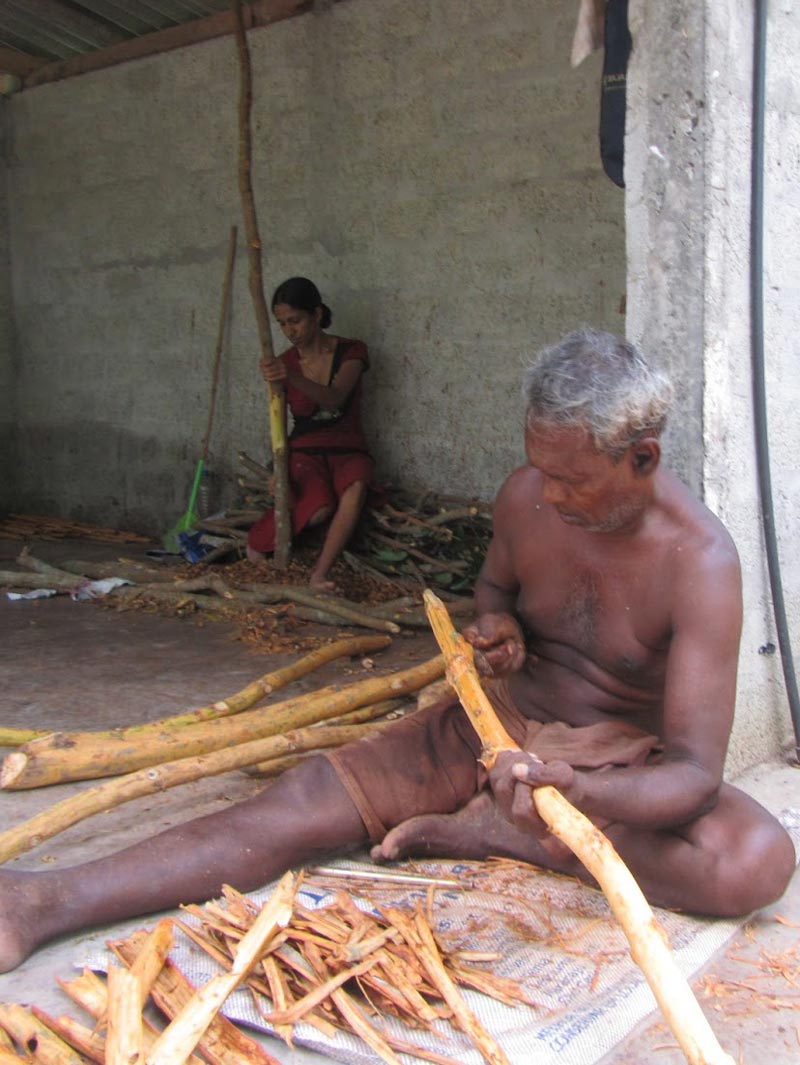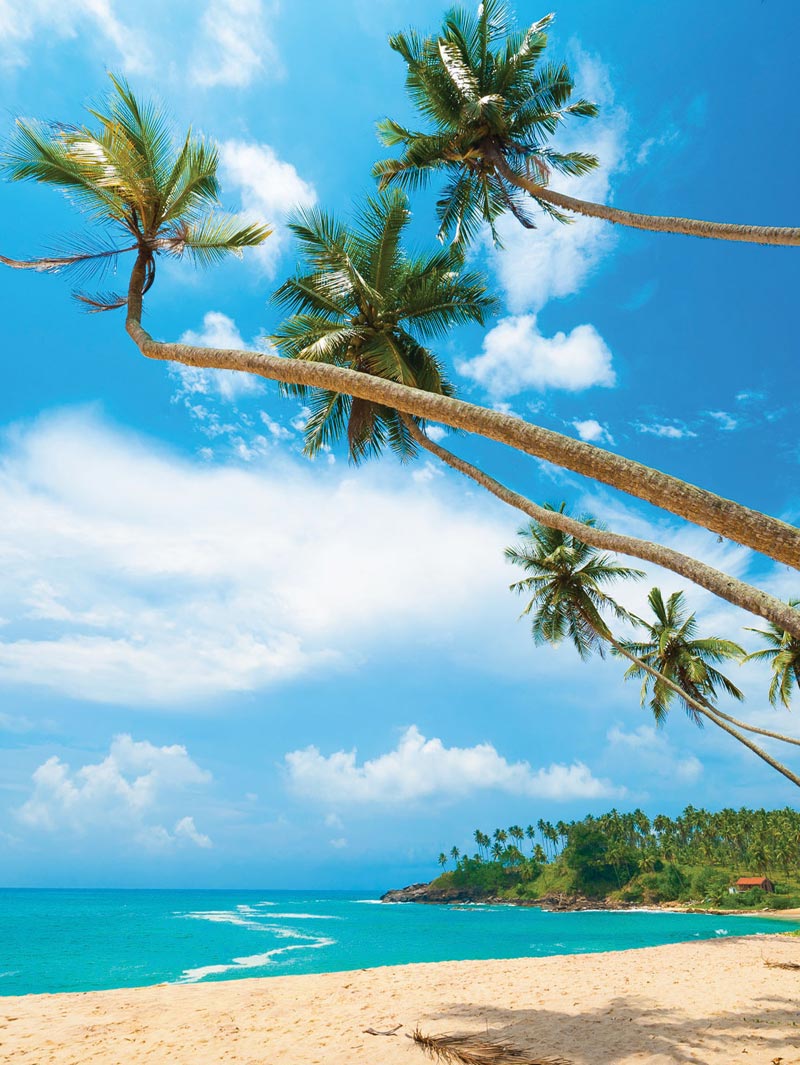The Maduganga river enters the sea at Balapitiya and is a stunning setting of winding waterways with pristine mangrove forests and many islands within. Recognised by the Ramsar Convention of Wetlands of International Importance, the river is home to many species of ecological significance. Colourful birds fly above as monkeys perched atop trees grin down at you and water monitors swim by.
Tour & Activity
The Kothduwa temple, or Koth Duwa Raja Maha Viharaya, is a Buddhist temple located on Kothduwa Island on the Madu Ganga in southern Sri Lanka. The island is located in Galle District of the Southern Province approximately 35km north of Galle and 88km south of Colombo.The temple is believed to have once sheltered the sacred relic of the tooth of the Buddha, circa 340 CE. The Bodhi tree on the island was planted from a bud of the Jaya Sri Maha Bodhi by Deva Pathiraja, minister to King Parakramabahu IV.LocationThe temple and the island on which it is located both lie within the Maduganga Estuary
Kothduwa is one of 15 islands within the estuary. The biodiversity of the wetlands surrounding the temple is exceptional and 111 species of birds and 248 species of vertebrates have been recorded in the area. In 2006, the Department of Wildlife Conservation declared 2,600 hectares of the estuary a wildlife sanctuary. In 2003, 915 hectares of the Maduganga Estuary was declared a wetland of international importance under the Ramsar Convention. The estuary and the 15 islands within, including Kothduwa became Ramsar Site 1372.
The sea turtles are one of the rare species found in the world. Their heritage could be traced to more than 100 million years. They are supposed to have lived during the Dinosaurs age. But at present about 8 varieties of turtles are said to be existing. But due to the destroying of these turtles, there is a threat of these species being eradicated from our planet.
The turtles get together in certain areas of the ocean annually to mate. After mating the female turtles come to the sea shore to lay their eggs. They are supposed to lay eggs after they attain the age of about 30 years. They are said to lay their eggs on the sea shore at night. It is said that these turtles prefer to lay their eggs on the same beach they were born. They are supposed to lay about 120 eggs at a time. Their eggs are white and they are similar to Ping-Pong balls. The eggs are kept damp by the female turtle by emitting a juice to cover the eggs. After laying eggs these turtles go back to the ocean. They keep no connection with the eggs or their newborns. The eggs are hatched with the help of the warm sand (heated by the rays of the sun). After about 60 days the eggs start cracking and newborns who are about 5cm long find their way to the ocean.


The Seenigama Temple, Halle is a popular name among the Hikkaduwa Tourist Attractions. The Seenigama Temple, Hikkaduwa is known as the Seenigama Devalaya in the colloquial Sinhalese. As is evident, Devalaya is the term for temple. The Seenigama Temple in Hikkaduwa is situated on the coast of the sea, beyond the 96 km post on the Colombo Galle highway. Thought to be over a millennia old, the Hikkaduwa Seenigama Temple is approximately 1300 ears old. However, there is no evidence to provide evidence to this speculation. Whatever historical records have been exhumed, structural evidence states that the Seenigama Temple is above 300 years old.
The Seenigama Temple, Hikkaduwa is a testimony both of the historical as well as cultural facet of Galle in Sri Lanka. If you are keen on exploring the conventions of temple worship and knowing all about the temple traditions of Galle, the Seenigama Temple or Seenigama Devalaya is a must visit. The sanctuary is also known as the Seenigama Devol Temple, owing to its patron deity, Devol. Devol is a god of the Buddhist pantheon. The Devol Deviyo or Devol culture is prevalent among the Sinhalese and continues to be the most accepted of all forms of worship by the fisher folk in the southern and western lowlands. Devol ceremonies are prominent and often practiced along the coastal areas. Some also guarantee the success of fishing.
The scent of cinnamon was unmistakeable from the second I set foot on Kurundu Doowa, released as cinnamon leaves were crunched underfoot. makes oil from these leaves, distilled with quillings (cinnamon quill chips) and roots.And headache, toothache, nose block There is no end to the benefits of the cinnamon tree.
Sri Lankan cinnamon ““ kurundu ““ has been enjoyed since antiquity for its delicate flavour. A 17th century Dutch captain is said to have claimed that Sri Lankan cinnamon is the best in all the Orient: “When one is downwind of the island, one can still smell cinnamon eight leagues out to the sea".


Ahungalla is clearly the most beautiful stretch of coast between Bentota and Galle on the west coast of the island. It is known for its swaying coconut palms, green vegetation, clear blue sea and golden sandy beach which all provide tourists with an atmosphere of utmost relaxation. Basket ware and handicrafts can be bought from local street side vendors and the area around Ahungalla is famous for its traditional hand carved masks made from light wood and painted with vegetable paints.
The roadside stalls, attractive jewelry and seafood are typical of the other such tropical beaches in the west and prove to be a major attraction among tourists as they are interesting cultural lures. It is an ideal location for swimming, turtle watching, sunbathing, snorkeling and a variety of other water sports. The variety of birds and elephants in the surrounding jungles also give a thrilling wildlife experience to the visitor.


